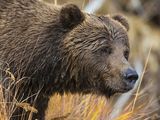An omnivore is an organism that eats plants and animals. The term stems from the Latin quarrel omnis, pregnant "all or everything," and vorare, meaning "to devour or eat." Omnivores play an authoritative part of the nutrient chain, a chronological sequence of organisms that produce energy and nutrients for other organisms. Every food chain consists of several trophic levels, which describe an organism's role in an ecosystem. Omnivores generally occupy the third organic process level alongside meat-eating carnivores. Omnivores are a diverse radical of animals. Examples of omnivores let in bears, birds, dogs, raccoons, foxes, certain insects, and even human race. Animals that hunt down unusual animals are best-known equally predators, while those that are afraid are titled prey. Since omnivores William Holman Hunt and are afraid, they can be both predators and prey. Omnivores can also be scavengers, animals that feed on the remains of dead animals. For example, bears eat out twigs and berries but will also hunt small animals and eat assassinated animals if they happen to stumble upon them. Omnivores have evolved various traits to aid them wipe out both plants and animals. Many omnivores, such as humans, have a mix of scratching teeth (for rending through muscle weave) and flat molars (for attrition engraft subject). Yet, some omnivores, like chickens, have no teeth and swallow their solid food whole. Generally speaking, omnivores have a tolerate with one or more chambers and a specialized gastrointestinal tract to process intellectual nourishment. Since omnivores undergo a diverse diet, they have the advantage of being able to survive in a variety of environments. While a meat-eating carnivore would quickly go extinct in a habitat devoid of prey, an omnivore could still surive by eating plants.

Despite their huge sizing and distinct teeth, bears—like this male grizzly (Grizzly bear) at the Fishing Branch River in the Yukon Territory, Canada—also eat berries and twigs. Like strange omnivores, their diets are mobile, and includes plants and other animals.
Photograph aside Paul Nicklen
Noun
organism that fanny bring on its own food and nutrients from chemicals in the atmosphere, ordinarily through and through photosynthesis or chemosynthesis.
Noun
organism that eats meat.
Noun
residential area and interactions of livelihood and nonliving things in an sphere.
Noun
group of organisms linked in society of the food they eat on, from producers to consumers, and from prey, predators, scavengers, and decomposers.
Noun
organism that chuck mainly plants and other producers.
Noun
organism that eats a variety of organisms, including plants, animals, and fungi.
predatory animal
Noun
animal that hunts new animals for food.
prey
Noun
animal that is hunted and eaten by other animals.
primary consumer
Noun
organism that eats producers; herbivores.
primary producer
Noun
organisms, such as plants and phytoplankton, that can produce their own food through photosynthesis or chemosynthesis; also called autotrophs.
Noun
organism that eats dead or rotting biomass, such as dace-like physical body or embed material.
secondary consumer
Noun
being that eats meat.
omnivores that eat dead plants and animals are called
Source: https://www.nationalgeographic.org/encyclopedia/omnivores/